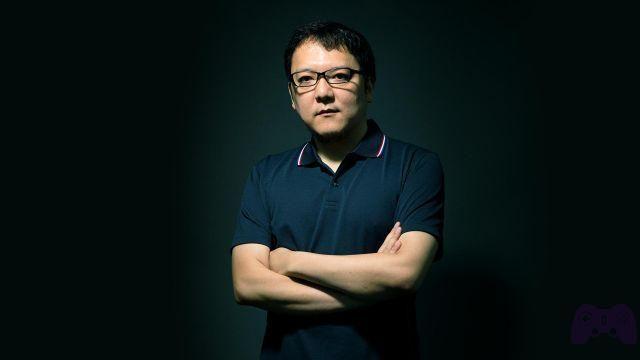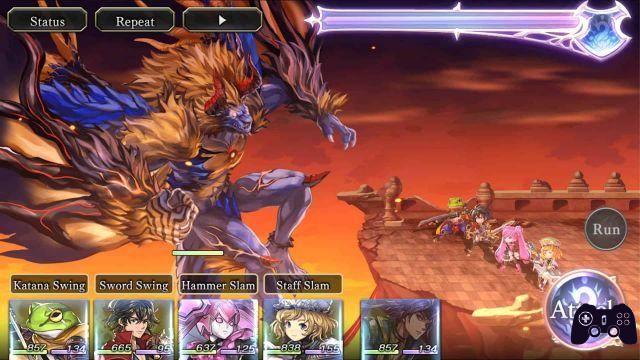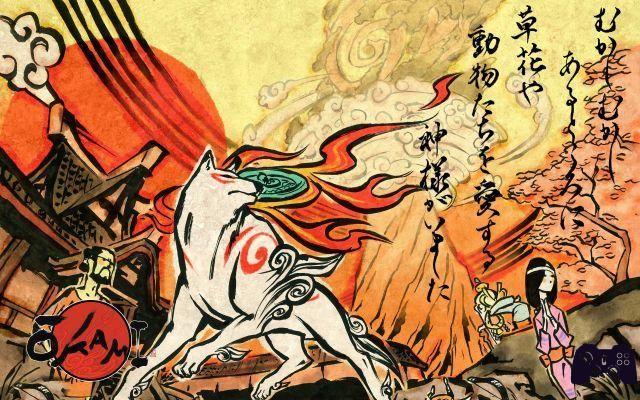
Have you ever dreamed of holding a brush and painting your game world? To create your own experience, immersed in the Art of the Video Game? Okami does this too; but he is not satisfied with being a picture in motion.
It has been a month full of wonders for all of us, lovers of video games and videogame beauty. Between the Monster Hunter World Beta which gave us a huge hype and XenoBlade Chronicles 2, there was something to talk about and discuss with dignity; but it was impossible to ignore the return of a very snubbed and not very popular production, artistic as few and marvelous in all its parts. Okami is back on PlayStation 4 and PC in a remastered version last December 12, and we have not missed the opportunity to have it also on a new generation platform.
The cycle ofArs Ludica has hosted, so far, names such as the wonderful Hellblade and l 'entire saga of The Witcher, where aesthetic influences blend perfectly with the gaming experience. Experience which, among countless other things, is precisely one of the keywords of Ars Ludica that we like to examine, promote and dissect, looking for methods and intentions, authorial intentions and artistic references. We couldn't, therefore, leave Okami out from this list, which from today is enriched with one of the most wonderful and full examples of "Ludic Art" still in circulation.
This article is part of the cycle "Ars Ludica“, Which aims to search for the artistic components in some of the most representative video games. Those who already think that video games can be an art form will probably find strong confirmation in the course of this article; for those who strongly believe that they are not, the invitation is to continue reading. Because there is no more beautiful art than what appears to the eyes of those who know how to admire it.
If you are curious about our analysis methodologies, take a look at the following links: Introduction to Ars Ludica; complements.
Aesthetic Research: the Grace of the Brush
Okami is of a delicate and refined beauty, oriental already from the main menuNot even thirty seconds pass - just the time of loading - that Okami opens to our eyes in all its oriental splendor. Starting from the main menu.
Delicate, soft and light pastel colors, floral motifs and Kanji, Kanji, Kanji. The oriental atmosphere is already framed, in all the wonderful charm that follows for us, unaware natives of Western culture. The biggest regret of the writer, probably, is never having managed to deepen all the beauty that lies behind the East and its traditions, its stories of love and hate, of family and honor. Okami, in its delicate beauty, allows you to peek modestly into the deep meanders of oriental culture, diving in for a short round trip. Starting from his graphic and artistic style.
Beyond the obvious Japanese watercolor technique, Okami uses the lesser known "Ukiyo-e", a word that can easily be translated as “image of the floating world”. This word denotes an artistic printing technique on paper, imprinted with wooden matrices and strongly linked to Japanese traditions, which saw its appearance in the Edo period between the seventeenth and twentieth centuries. This technique was widely popular and mass, designed primarily for those who could not afford actual paintings, and its name refers to the youthful and impetuous culture that flourished in Edo, Osaka and Kyoto in the period just mentioned; a need to escape the cycle of death and rebirth of Buddhism, using art as a catharsis. Nothing new, in short.
And just take a look at the famous Great Wave of Kanagawa, below, to realize how Okami fully fits into this artistic technique, which boasts unprecedented beauty and care.

The Great Wave of Kanagawa
But Okami is also and above all a video game, and one of the most refined: under the guidance of visionary Hideki Kamiya, the cara development team Clover Studio was able to fuse Ukiyo-e and Art Ludica, blending all the artistic influences of reference in a delightful cel-shading that is splendid to see: the contours of Okami are soft, watery and floating, almost ethereal, adapting perfectly to natural beauty of the game world and the creatures it represents.

To learn more:
Clover Studio: monograph of an (in) success
The result is mind-blowing, enough to blow your mind: Okami it is a picture in motion, a painting in continuous creation, a work of art that puts the brush directly into the player's hands, asking him to trace the contours as he prefers. Literally: with the push of a button, the player can use Amaterasu's tail as a "Celestial Brush", and harness the powers of the Goddess to influence the surrounding world. A world of unspeakable beauty and refinement, paradoxical in its being able to be narrated by a simple image but, at the same time, in being able to lose value with a mere static representation.
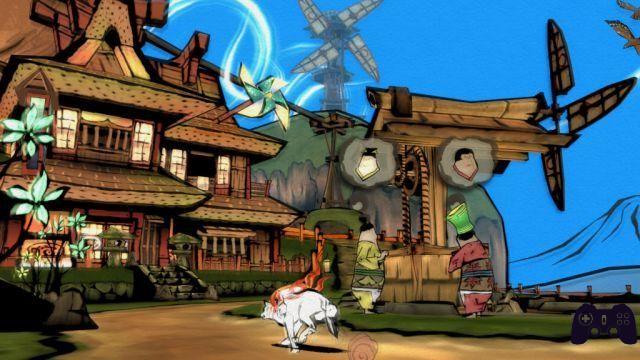
Okami it must be seen in motion, experienced in real time. And there really is no better way to describe its aesthetic beauty - even if, so far, we have barely touched the surface of a work so full of wonder.
At the roots of the Konohana Tree: Japanese Culture
A book that we all wantIl Garyou Tensei Okami it's a book any Okami fan would love, if only here in the West we could understand it. Composed mainly of artwork with a good percentage of text, the book was published in 2007 exclusively in Japan and explains many of the cultural references present in Okami, from mythology to objects, from characters to places. Just look at the Wikia official page to realize that there is really a lot of meat on the fire: to make Okami, Clover Studio dug directly into the foundations of Japanese culture, drawing elements from Shinto mythology (very strong in the game) and from the folklore of his nation.
The game title itself, as many fans will know, is a structured word game on Japanese Kanji: Kami is the word generally used to mean a spirit or a deity, and the initial O is a reinforcer, resulting in something akin to "Great Divinity". But at the same time, Okami it also means "Wolf" if read differently, and is a reference to the goddess Amaterasu herself (whose full name is Amaterasu-o-me-kami), the most important goddess of the Shinto religion.
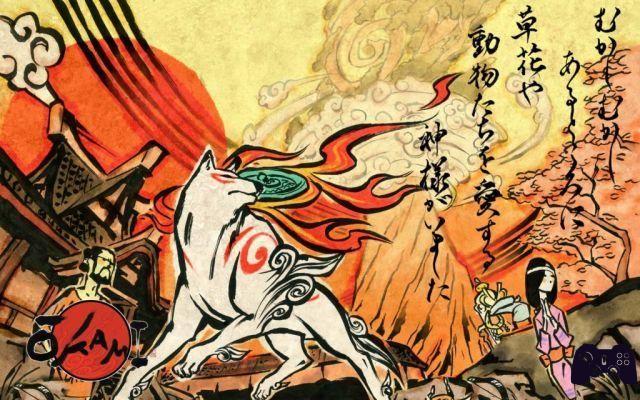
The legend of Amaterasu
It is said that Amaterasu was the god of light: when the god of storms Susanoo hurled his wrath on Earth, Amaterasu went into hiding inside a cave, and darkness fell on the world. The gods tried to lure her into the open to drive out the demons outside, but only the goddess Ama-no-Uzume succeeded: after hanging from a tree a mirror and Magatama (two of the three sacred Imperial insignia of Japan), the goddess began to do erotic dances to arouse the curiosity of Amaterasu, who finally decided to come out and was attracted by her splendid image reflected in the mirror. A small ray of light returned to shine on the world when the goddess emerged from the cave, and it is what we humans today call "Dawn".
Subsequently, Amaterasu got so close to the mirror that the gods were able to grab her and bring her back to the skies, allowing sunlight to shine on the world. Not surprisingly, the main power of Amaterasu in Okami is precisely that of the Sun, a power that she possesses from the beginning and that must not be given to her by the Celestial Deities.
Okami is rich, full of references to Japanese cultureBut not only: Susano, direct descendant of Nagi in the game, is the name of the aforementioned god of storms, while the sword used by Nagi, Kusanagi, gives the name to the starting village of the game and it is the third Imperial Insignia of Japan. The Divine Mirror is used in the game to save progress, while Magatama (practically jewels) are simply described as "Rosary" within the game. The three insignia symbolize, respectively, the three virtues sacred and dear to Japan: Value, Wisdom e Benevolence. And that's just the beginning of the long list of elements, curiosities and traditions to which Okami refers, last but not least legend of Orochi, the fearsome monster who is awakened at the beginning of the game and who, in the original legend, is eliminated by Susanoo with a bit of cunning.
For a partially complete guide, we recommend that you refer to this guide on GameFaqs, which summarizes many of the most interesting influences in the development of the game and its indisputable beauty.
You will notice that almost every single main character in the game refers to a name from Shinto mythology, and it could be said that, although not Shinto in the strict sense, Okami harks back to the religion and philosophy from which he draws his elements: love for nature, the beauty and purity of a clean world, enlightened and deprived of any dark force, and the will to fight to achieve a result so full of meaning.
Okami it is a picture in motion, a painting in continuous creation, a work of art that puts the brush directly into the player's hands
Okami's Ars Ludica: Discovery, Artistic Beauty, Cultural Depth
Thousands and thousands of more words would not be enough to fully describe Okami, a title so refined and so wonderfully elegant that it deserved the paradoxical recognition of Lowest-selling Game of the Year ever. Its beauty has been praised by many newspapers of all kinds, by enthusiasts and simple gamers, by lovers of RPGs and action and - in short - by practically every lover of video games in general. Because in the end it is true, Okami it is above all a video game, an entertainment work which, as such, must be entertaining; but it is also an important lesson to follow, an example, a model and living proof that, if the idea behind it is strong, any video game can become a work of art. Even if it doesn't necessarily have to represent visual art.
Okami's Ars Ludica, as we have often said elsewhere, lies in its interactivity, in its intellectual fullness, in its cultural refinement. Playing Okami is more than getting from the beginning to the end of an adventure: it is a continuous discovery, a continuous stimulus to curiosity, a continuous wonder that leads to a full, destabilizing and unique play experience. And it is, in short, everything a video game should ever be - and everything a video game can ever aspire to.




